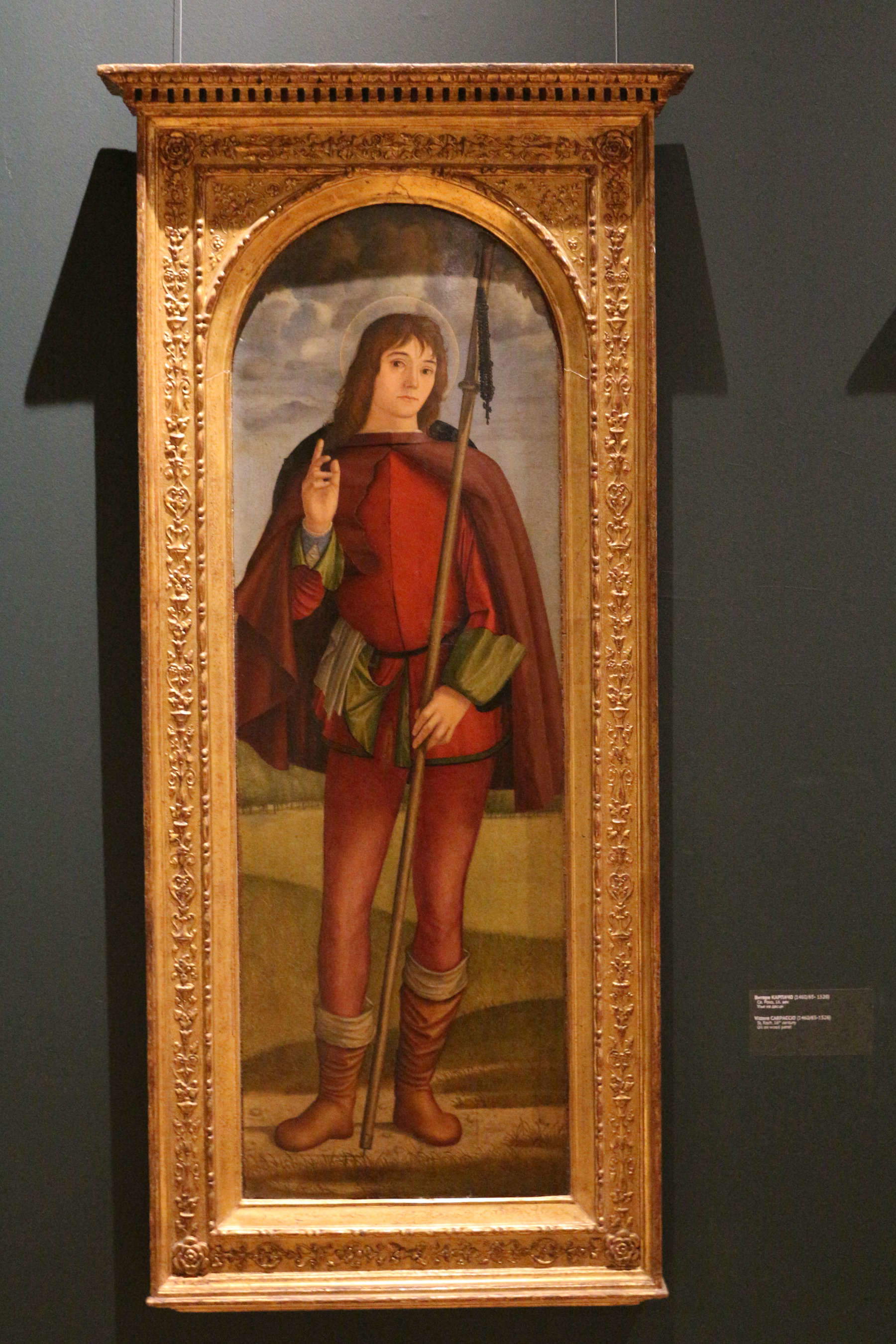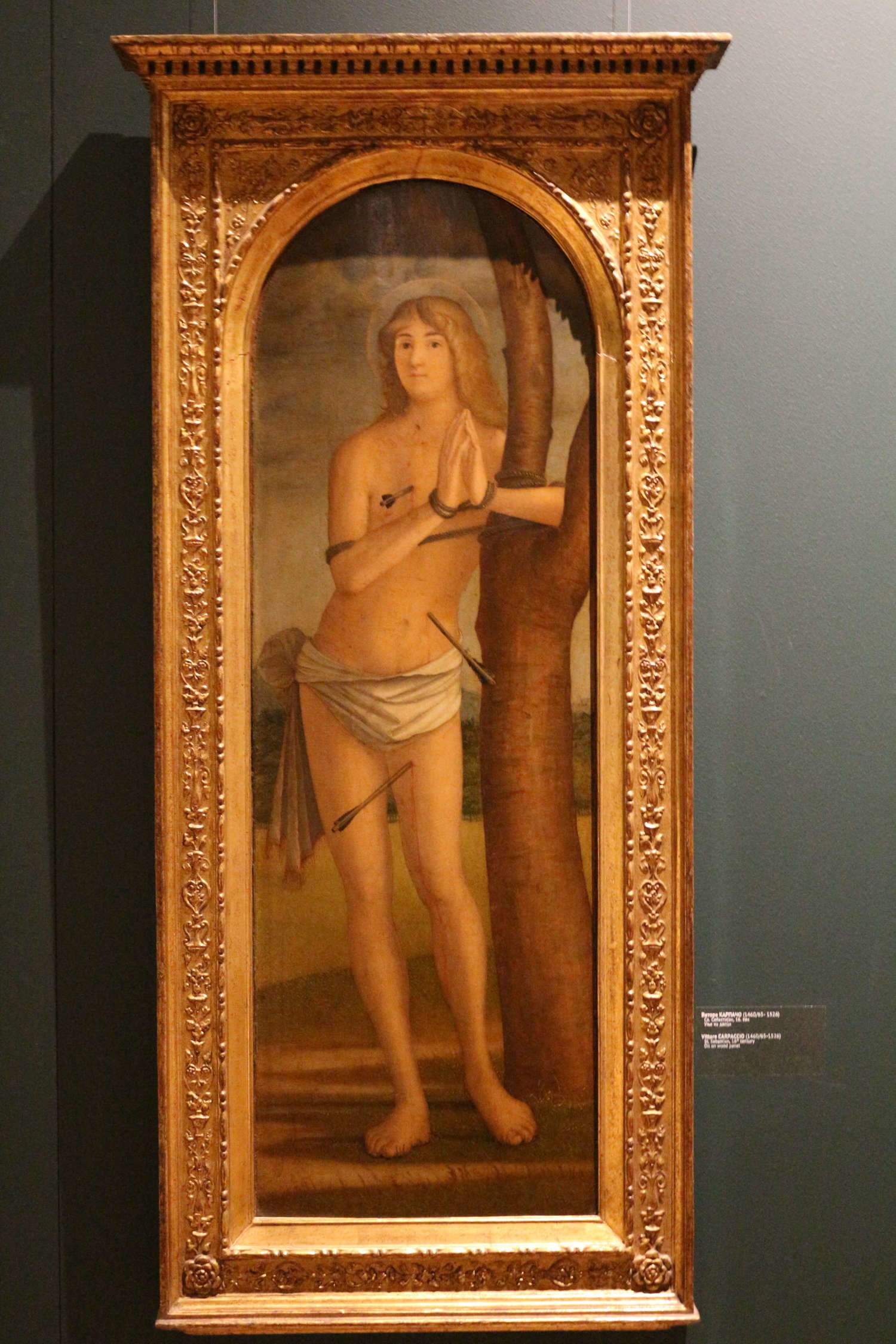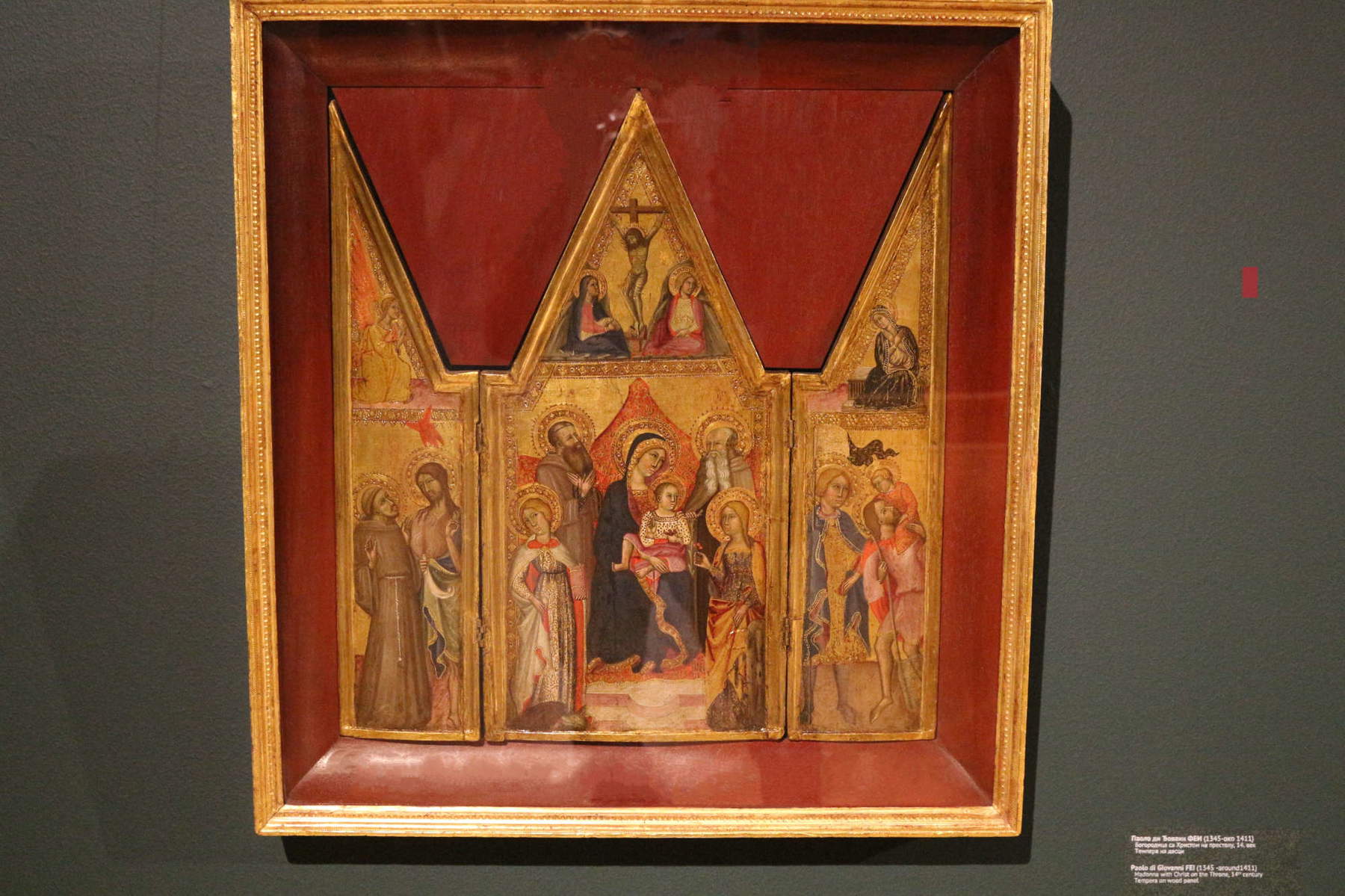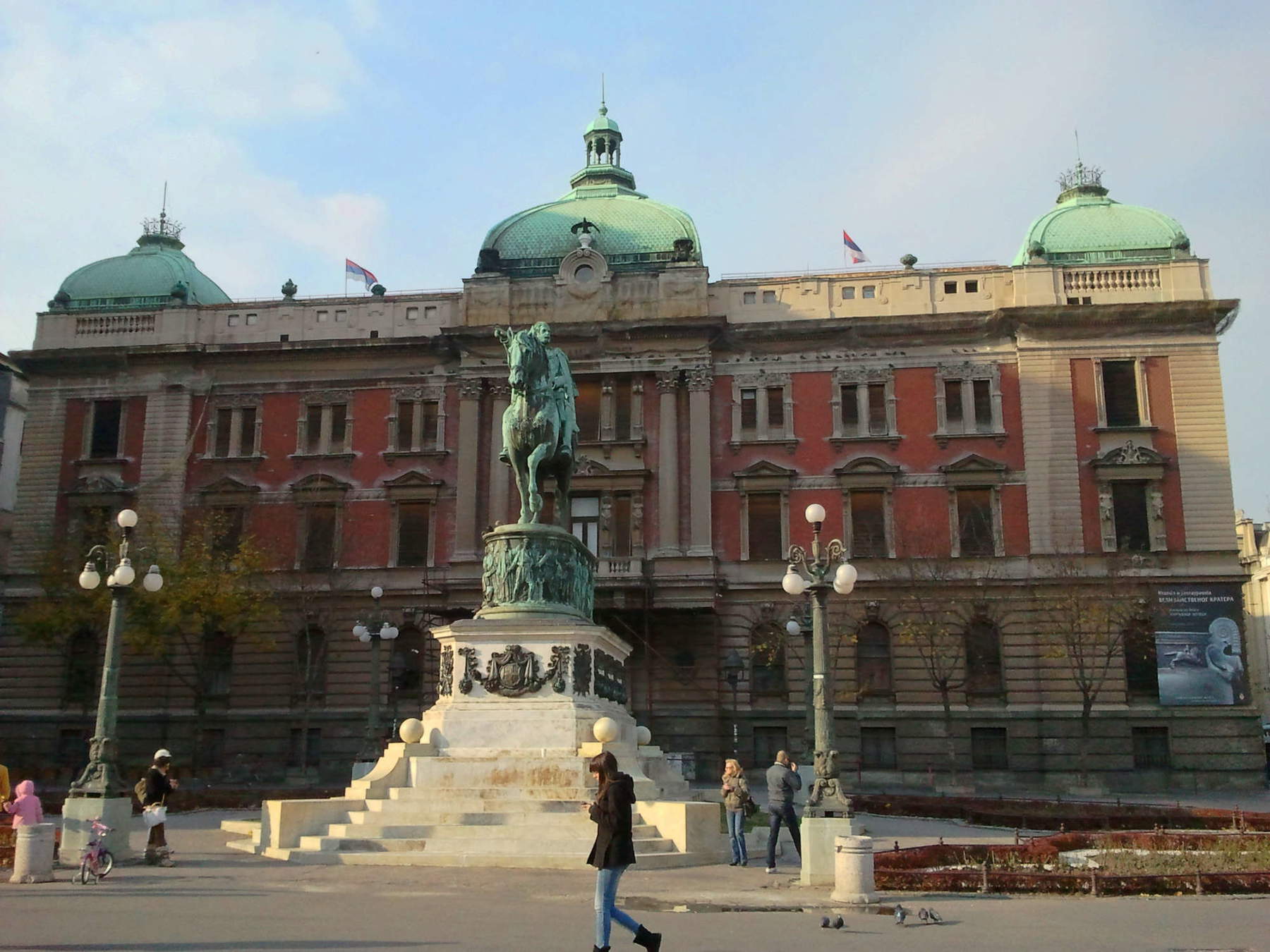The story of eight ancient Italian paintings sounds more like a period thriller than a court case. Instead, it is an episode that really happened and on which the word “end” has not yet been put, despite a ruling by the Court of Bologna filed on February 21, 2019. The compelling case-particularly topical given the many initiatives through which attempts are being made to return works of art that have illegally arrived elsewhere to their countries of origin, and consider the’latest news related to the Fano Athlete preserved at the Getty Museum in Los Angeles - was recently reconstructed by Ansa journalists Tommaso Romanin and Vincenzo Sinapi who, for Mursia types, published Spoils of War. The mystery of the paintings looted by the Nazis and deported to Belgrade. The protagonists of the narrative are precisely eight paintings purchased by the Nazi general and Hitler’s right-hand man, Hermann Göring, as well as some characters who seem to have come out of a movie script: first and foremost Ante Topić Mimara.
It all began, the authors write, “on an unspecified day in 2014,” when a Carabinieri deputy of the nucleus Tutela patrimonio culturale (Tpc) in Florence, doing a trivial Google search, realized that one of the paintings in the database of stolen works of art had returned to Italy about ten years earlier to be displayed in the exhibition Da Carpaccio a Canaletto. Treasures of Italian Art from the National Museum in Belgrade (curated by Tatjana Bošnjak and Rosa D’Amico), which stopped at the Pinacoteca Nazionale in Bologna in 2004 and at the Castello Svevo in Bari in 2005, and then “placidly” returned to Serbia. The work was, and still is, kept in the National Museum of Serbia in Belgrade, and by cross-referencing the records of the Tpc database with those of the museum institution, the Carabinieri identified seven other paintings which, between 1941 and 1943, were purchased on behalf of Göring, taken to Germany, then recovered by the Allies and finally illicitly delivered to then-Yugoslavia.
Even after the war, Italy tried to claim these paintings, mainly through the efforts of an official who for many years headed the Office for the Recovery of Works of Art Stolen by the Germans, Rodolfo Siviero. But unfortunately the requests were unsuccessful, despite Law 77/1950, which mandated: “Works of artistic, historical and bibliographical interest, which in the period from January 1, 1936 to May 8, 1945 were transferred in ownership and in any capacity to the Germanic State, to political figures of the Nazi regime or to Germanic subjects and of which the Italian government has obtained the restitution by the Allied military government in Germany, are acquired to the artistic, historical and bibliographical patrimony of the State and preserved in museums or libraries.” From the investigation carried out by the Carabinieri then began a trial in which three Bolognese officials involved in organizing the exhibition were charged; they were eventually acquitted because they were deemed unaware of the illicit provenance of the paintings. However, the ruling put a stop to the matter, namely the confiscation of the eight works. We interviewed Tommaso Romanin to delve into this story, referring readers to the book for further details.








 The
TheMS. When did you decide to write a book about the paintings purchased by one of the most influential figures of the Nazi regime and then “deported” to Belgrade?
TR. I have been following judicial reporting for the Ansa news agency for many years, and in November 2016 I came across this investigation that was already heading toward trial. Right from the start I had the feeling that the affair, rather than a news case, resembled a historical thriller. So I read some of the documents, such as the first Carabinieri Tpc report, and followed the evolution of the trial until the 2019 verdict. Chatting with Vincenzo Sinapi, at the time one of the people in charge of national news at Ansa, we decided to look into the matter further and thus requested the court and the prosecutor’s office to view the court documents. Since the investigation was concluded and the judgment was final, we obtained permission; our book is based on these documentary sources and other archival material; in addition, Vincenzo Sinapi traveled to Belgrade to verify that the eight paintings mentioned are actually on display in the halls of the city museum.
What are the works at the center of the investigation and the book?
They are anAdoration of the Child attributed to the School of Ferrara (c. 1480), in the 2004 exhibition catalog assigned to a generic Lombard painter of the 15th-16th centuries; the Madonna and Child attributed to Paolo Veneziano (15th century), which, however was not exhibited in Bologna or Bari but came to Rimini in 2002(Il Trecento Adriatico, Paolo Veneziano e la pittura tra Oriente e Occidente) and is present in the Carabinieri Tpc database; of a triptych with Madonna and Child, Saints, Annunciation, Crucifixion attributed to Paolo di Giovanni Fei, alsoalso present in the Carabinieri Tpc database; two panels attributed to Vittore Carpaccio or workshop(St. Sebastian and St. Rocco); the Madonna and Child Enthroned by Spinello Aretino, catalogued in the database of lost works; the Madonna and Child and Donor attributed to Jacopo Tintoretto; and finally the Portrait of Queen Christina of Denmark, which ancient sources assign to Titian, while today it is attributed to a 16th-century Lombard painter.
In summary, can you tell us the story of the paintings?
These paintings, traveling different paths, were sold by antiquarians Eugenio Ventura and Alessandro Contini Bonacossi to Göring, who was as much an art lover as Hitler. When World War II ended, a large amount of works that had ended up in the hands of the Nazi regime were concentrated in various repositories run by the Anglo-Americans, the main one being the Central Collecting Point in Munich. The Allied government then began to reconstruct the histories of the individual objects so that they could be returned to the countries from which they had been taken, assessing their respective claims and redelivering the works. As can be imagined, the context of the time was very confusing and the Allies wanted to hurry because, in the immediate postwar period, there were many other problems to be solved. For the most famous masterpieces, representatives of the states who had every title to claim them showed up, yet it could happen that shady characters who were looking for an opportunity to do business also “knocked on the door.” Here, then, Ante Topić Mimara popped up at the Munich collection center. It is not known whether this was a spy or a trafficker, but investigations revealed that he initially failed in the venture. However, he did not give up and later managed to convince the center’s manager that he was the delegate from the former Yugoslavia for the return of some works. Indeed, he submitted lists detailing the paintings and many other artifacts, probably obtaining the lists from Wiltrud Mersmann, a young German art historian who worked at the collection center and who years later would become his wife. Mimara, in the spring of 1949, thus had as many as 166 precious objects, including paintings, ingots, carpets, etc., delivered to him.
When was Mimara’s “loot”delivered toBelgrade?
One of the curators of the Serbian Museum stated that in July 1949, 56 paintings were acquired from the Reparations Commission, of which 46 flowed into the foreign art collection. Cross-referencing the results of Carabinieri investigations, analysis of recently desecreted American documents of the time, other documents, and information gathered in Belgrade, we can now say that most of these 56 are precisely the paintings and icons that in June of that same year Mimara deceitfully took away from the Collecting point in Munich.
Suspicions of possible fraud, however, go back as far as the early postwar period....
In fact, shortly after the handover to Mimara, the CIA sensed that something was amiss ... and even in Italy there was a realization that a group of Italian works had been illegally taken away from the Munich collecting point. In particular, it was Rodolfo Siviero, whom we might call an Italian “monument man,” who made efforts to have them returned to the state, but unfortunately he was not as successful as he had hoped. It remains on record, however, that Siviero understood what had happened, and his information helped shed light during recent investigations.
Why is it that, given that Siviero had discovered this scam, Italy did not make more effort in the postwar years to recover those works?
Probably because in the early 1950s and then throughout the duration of the Cold War, there were other priorities and, above all, it was crucial internationally to maintain a delicate balance with the Balkan countries. Our guess is that the matter was dropped so as not to create diplomatic incidents.
And we come to sensational fact: the two exhibitions set up in Italy. It seems incredible that these paintings returned twice to our country without anyone realizing the “problematic” provenance....
When the works arrived in Italy, the provenance was probably fumily indicated, although in the museum’s cataloging the paintings state, as an acquisition title: “Received from the War Damages Compensation Commission of the FNRJ (the Socialist Federal Republic of Yugoslavia, Ed.), 1949.” In addition, some paintings can be found in Siviero’s inventories published in 1995 and in the Carabinieri database. This information, accessible to all, should have sparked doubt on the part of the loan officers. The resulting trial, however, led to the acquittal of the art historians, and the feeling we had, following the investigation, was that the court case was a sort of ploy to get to the point of decreeing the confiscation of the paintings. Since the date of that act, however, there have been no further developments and the works are still in the Serbian museum.
By the way, your research shows that the subject of the dispute is not only the eight works described, but there could be others as well, right?
Yes, by cross-referencing the lists of Mimara, the CIA, the records of the investigation, we realized that in a similar condition to these paintings there are at least 11 other paintings, also kept in Belgrade, which have the same characteristics: that is, they are paintings from Italy, presumably they passed through the Munich center and were classified as war damage compensation. It would therefore be appropriate to investigate the provenance of these other works, among which we have identified a canvas by Francesco Guardi, a painting by Canaletto, one attributed to Alessandro Turchi, known as l’Orbetto, and others of value. Of these 11 there is evidence that they came from the Mimara scam.
Let us conclude with a somewhat provocative question: but if Göring, as the sources indicate, legitimately purchased these works, by what title can Italy claim them?
The paintings were legitimately purchased, however, already at that time they could not be exported to Germany-as Göring did-according to Law 1089 of 1939, which in Article 35 provides for the prohibition of exportation when it may cause damage to the national heritage. And, according to the judge who conducted the trial, “the absolute importance of the works of art [...] is out of the question.” Moreover, the paintings came to Belgrade through a crime committed by Mimara, who stole them from the Collecting point in Munich. So Serbia acquired them in bad faith-as stated in the Bologna court ruling-even though the accusations from Italy were answered by the museum with as many court documents, claiming to be the rightful owner and even denying the possibility of questioning two Serbian officials initially involved in the investigation. Today, therefore, anyone who wants to admire the eight paintings must necessarily travel to Belgrade. But Romanin and Sinapi hint in the book’s conclusions that alternative solutions to the physical return of the paintings are being considered, from loaning them to the museum to some sort of co-ownership. A compromise, in short, that would represent a “win-win” ending to a story in which art is intertwined with fraud, diplomacy and justice.
Warning: the translation into English of the original Italian article was created using automatic tools. We undertake to review all articles, but we do not guarantee the total absence of inaccuracies in the translation due to the program. You can find the original by clicking on the ITA button. If you find any mistake,please contact us.